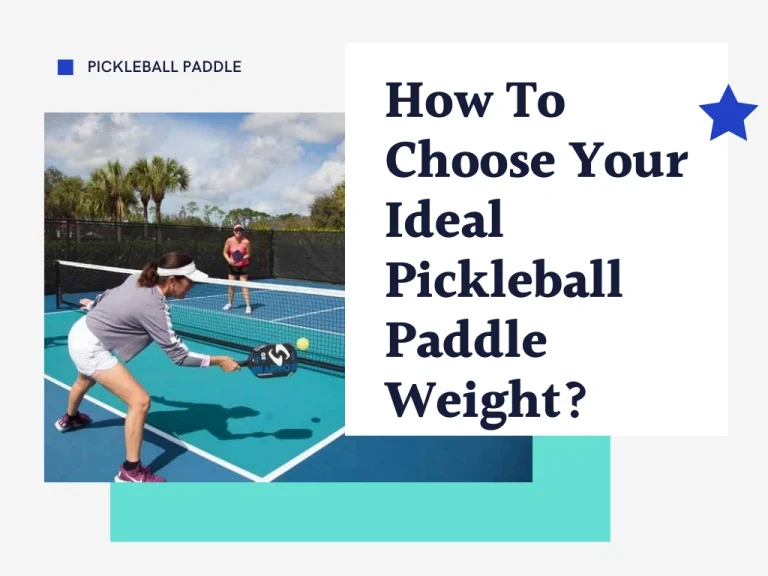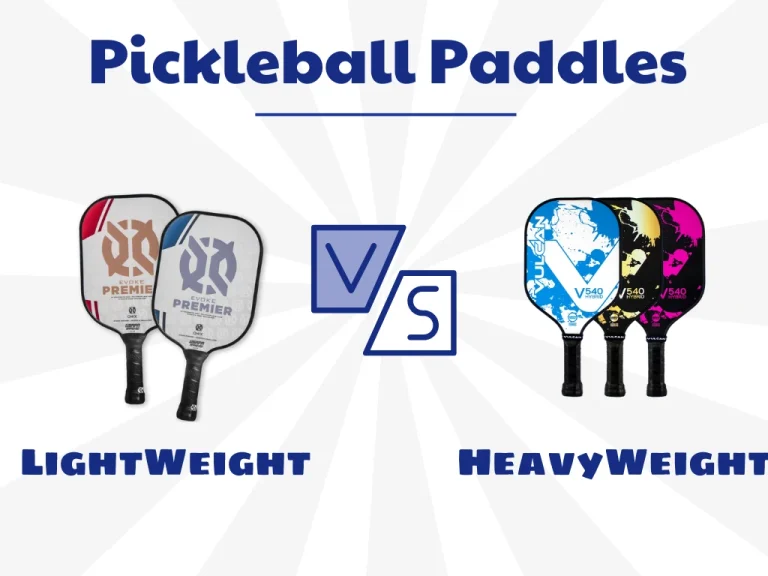Pickleball is a more common sport, attracting all ages and levels. However, selecting the right weight for your pickleball paddle may make you need clarification. Especially when choosing between lightweight and midweight pickleball paddles.
Pickleball paddles weight can be divided into three main groups according to weight:
- Lightweight
- Midweight
- Heavyweight
However, in this piece, we are just analyzing between light-weight and mid-weight. If you are aware of these differences, you can make better decisions and increase performance.
Key Takeaways
- A midweight paddle is generally more durable than a light paddle.
- Lightweight paddles excel in quick reactions and control, while midweight paddles balance power and durability.
- Lightweight paddles are typically more expensive due to advanced materials.
- Choose a lightweight pickleball paddle if you value your ability to move quickly, agilely, and easily around the court.
- Choose a middleweight paddle for a balanced power, control, and maneuverability combination.
Overview About Pickleball Paddle Weight
Lightweight Paddle
The average weight of a lightweight pickleball paddle is 6.0 – 7.3 ounces. They are favored for their flexibility and quick reaction speeds.
Made from materials like graphite and composite, these paddles provide excellent control and a softer touch on the ball.
When I first tried a lightweight paddle, I was blown away by the speed and maneuverability it provided. The quick responses and ease of control were ideal for fast-paced volleys and exchanges at the net. However, I often felt that my strokes lacked the power and depth I desired.
Midweight Paddle
Weighted between 7.3 and 8.4 ounces, midweight pickleball paddles provide an excellent balance of control and power. This makes them adaptable to varied playing styles.
Middle-weight paddles are constructed from materials like polymer, Nomex, and fiberglass. So, they provide a solid feel and enhanced durability.
The extra weight gave me a more solid feel and boosted the power behind my shots. I can drive the ball farther into my opponent’s court simply.
Table Of Comparison
| Key Note | Lightweight Paddles | Midweight Paddles |
|---|---|---|
| Materials | Graphite, Composite | Polymer, Nomex, Fiberglass |
| Weight | 6.0 – 7.3 oz | 7.3 – 8.4 oz |
| Control | Better maneuverability | More stability and power |
| Grip circumference | Tends to be smaller and easier to handle | Standard grip size, bigger |
| Touch and feel on the ball | Softer touch, quick reactions | Solid feel, and more stability |
| Durability | Moderate durability, less impact-resistant | High durability, more impact-resistant |
| Price | More expensive | Moderate price range |
| Users | Beginners, players seeking agility | Intermediate to advanced players |
Key Differences Between Lightweight and Midweight
#1. Durability
Middleweight paddles are more durable than lightweight paddles. Polymer and fiberglass materials are generally more durable than graphite and composite materials due to their inherent physical properties and structural composition.
The lighter materials may not withstand heavy impacts as well over time, making them more prone to wear and potential damage with frequent use. While graphite is strong and stiff, it is also more brittle than the above materials. So, middle-weight paddles are also more durable when exposed to great force.
I’ve been using a light pickleball paddle when I first began to learn the game. It turns out to be sturdy. However, the paddle starts to wear with time, particularly on the edges where it gets hit a lot.
#2. Weight
- Light paddles weigh 6.0 – 7.3 oz. They enable ease of mobility and quick reaction times.
- Midweight paddles with 7.3 – 8.4 oz. They provide a balanced mix of power and control while requiring slightly less maneuverability.
You will be able to identify the sort of racket you own based on the details that the supplier has provided.
#3. Performance
Power and speed
A light paddle provides less speed and force than a midweight paddle. Weight is proportional to velocity in physics. So lightweight paddles provide less power but greater agility due to their reduced weight. This will allow players to respond faster and be more adaptable.
Otherwise, holding a medium-weight paddle requires a little more hand strength. Although it offers more force, this will be less flexible than lightweight. The midweight paddle will maintain a suitable pace while balancing output power.
Control and accuracy
Lightweight paddles offer more control and precision than midweight paddles because of their lighter. They are perfect for players who focus on finesse and accurate shot placement.
Midweight paddles are heavier, so they demand more hand power to handle. The additional weight can enhance stability and control, especially on volleys and defensive plays. This gives balanced control, and power, suitable for various playing styles.
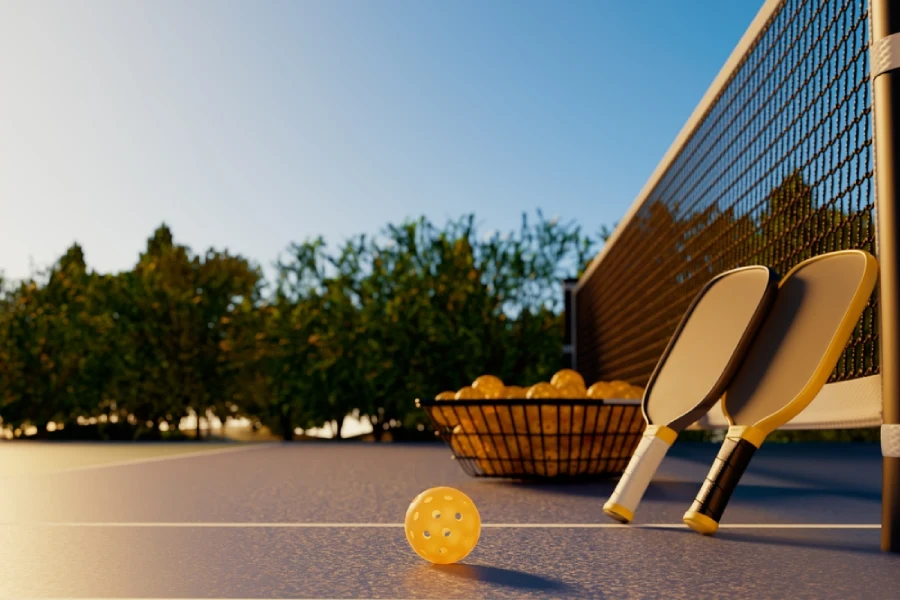
Spin control ability
Lightweight paddles may provide superior spin control over midweight paddles due to improved mobility and wrist movement. The reduced mass makes it easier for players to manipulate the paddle quickly, generating spin-on shots such as slices, topspins, and spins.
The paddles with higher weights will provide enough spin control while maintaining power. The extra weight provides stability during spin shots, helping players maintain control over the ball’s trajectory and spin rate.
Handle design and comfort.
If your hands are petite, a light paddle will be more comfortable than a middle-weight paddle. Lightweight paddles often feature smaller grips, making them easier to handle for players with smaller hands. Midweight paddles typically have standard grip sizes. The added weight can provide a more solid and stable feel during play.
I asked some experienced pickleball players about their favorite paddle. Most of them like the stability of holding middleweight paddles. But they will still bring both types of paddles to switch on the court.
#4. Cost
Midweight paddles are often less costly than lightweight ones. I searched for the average cost of the product from the 50 most popular brands of pickleball. Lightweight pickleball rackets cost between $80 – $250 at e-commerce sites. Meanwhile, midweight paddles fall within a moderate price range, usually around $50-150. Lightweight paddles are frequently more expensive than midweight paddles due to the superior materials and technology employed in their production.
#5. Sound
Compared to a medium-weight paddle, a lightweight paddle will make fewer noises. I once read an essay on Faster Capital. This article claims that carbon fiber or graphite materials have superior impact absorption properties. These materials can flex under impact, absorbing stress and reducing vibrations transmitted to the participant’s arm.
As a result, lightweight materials typically absorb greater impact and create less noise while midweight paddles tend to produce a louder.
A lightweight paddle produces sounds between 60 and 70 dB. This makes them better suited to playing in noise-sensitive locations like residential areas or indoor courts.
The sound of a midweight paddle hitting a pickleball often varies between 70 and 80 dB. This is due to denser materials like polymer cores and fiberglass faces, which transmit more impact energy as sound. This louder sound is more noticeable and may not be suitable for noise-sensitive settings.
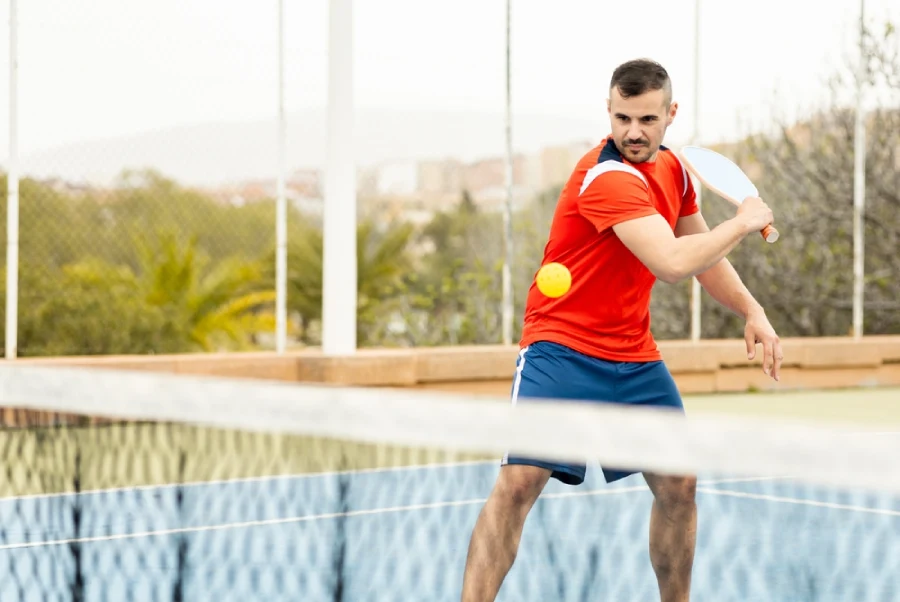
Which Pickleball Paddle Weight Is Better?
Lightweight Paddles
- Ease of maneuverability, quicker reactions, and faster swing speeds
- Less strain on the arm and shoulder, ideal for longer play sessions.
- Higher control, suited for precision shots and control-oriented play.
- Lacks the weight and force required for strong drives and shots.
- May tire out more quickly if played for a long time.
- Perhaps more affected by wind when controlled in outdoor conditions.
Midweight Paddles
- Balanced performance among power and control.
- More stability on impact, allowing for consistent shots.
- Made from sturdy materials, enhancing longevity and resistance to wear.
- It causes arm fatigue more quickly than lightweight paddles.
- Less maneuverability, slower reactions, and swing speeds.
- Require players to possess intermediate skills and expertise.
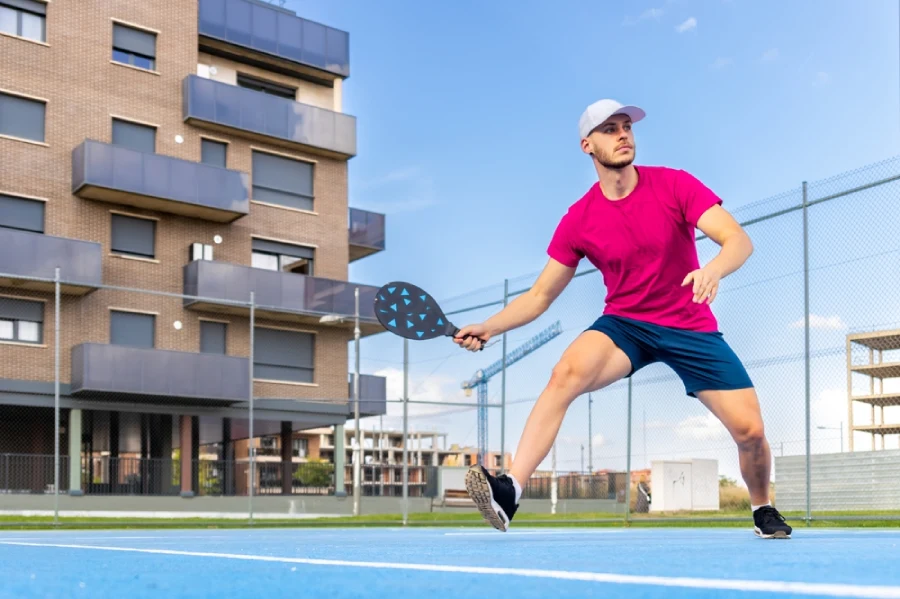
After hundred pickleball games, I realize that I tend to favor midweight paddles when compare two this weight. The mix of power and control complements my playing style, letting me play more confidently and precisely. The midweight paddle has become my preferred pick, giving me the ideal balance to improve my performance on the court.
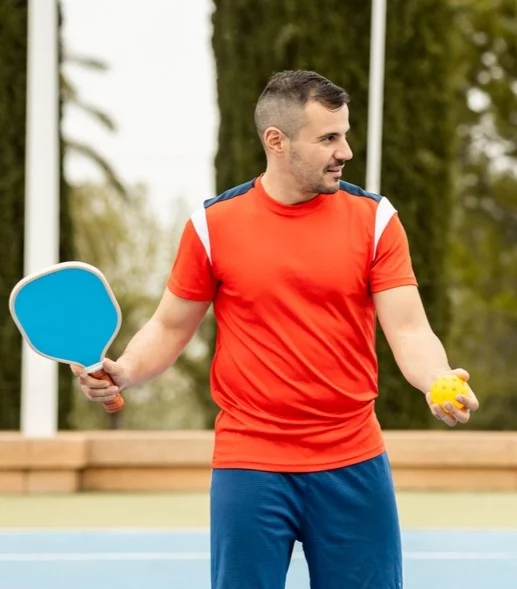
Sid Edmondson
Founder of Paddle Pickler
Which Paddle Weight Should I Choose?
Choose a lightweight paddle if
- You are a newbie: With a lighter paddle, it’s easy to handle and control. It’s ideal for players who have just started and continue to develop their skills.
- You focus on speed and flexibility: Light paddles offer quick responses and ease of control, perfect for fast-paced volleys and quick net exchanges.
- You are nervous about getting tired: Using lighter paddles throughout extended matches may assist you stay energized and play well.
- You enjoy finesse and rapid play: Lightweight will allow for more agile movements and faster responses.
Choose a midweight paddle if
- You are a proficient or advanced player – A midweight paddle provides a balance of power and control, enhancing gameplay and shot effectiveness.
- You prefer power and stability – Midweight paddles provide more power behind shots. Thereby it is easier to drive the ball deep and hit strong shots.
- You prefer balanced play – The added weight provides a solid feel, allowing for improved shot consistency and confidence on the court.
- You desire versatility – Midweight paddles provide a solid balance of control, power, and stability for a well-rounded performance.
Last Though
Choosing between a lightweight vs. midweight pickleball paddle depends on your playing style and personal preferences.
While the light paddles are well-liked because of their controllability and flexibility. The midweight balances the speed, control, and power of the paddle. The heavyweight paddles will stand out for their strength and stability.
So, making intelligent choices will improve your pickleball experience.


